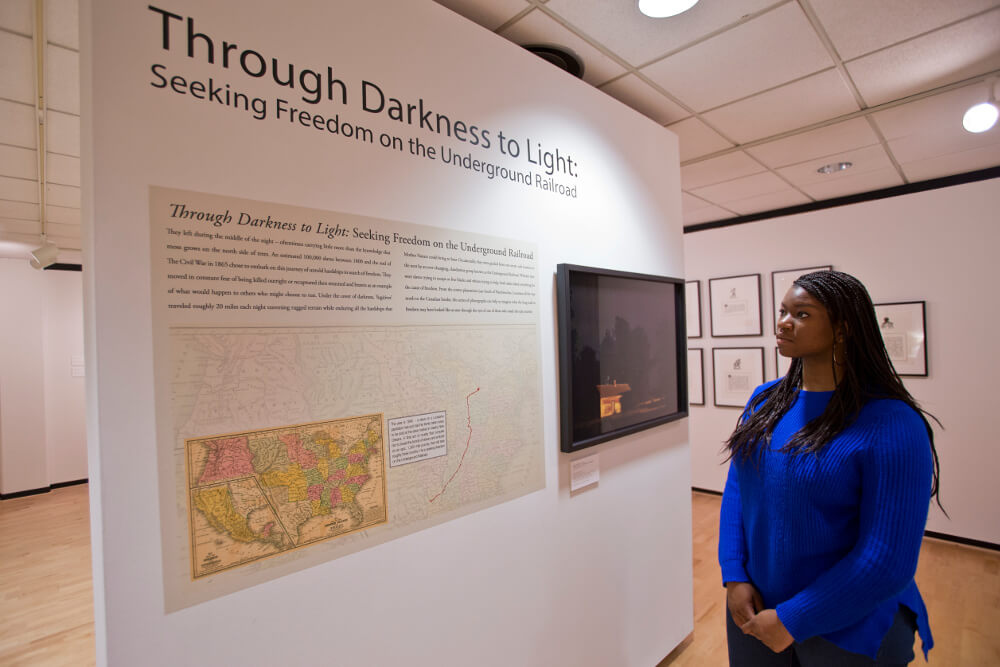While at Denison, I’ve met a number of artists, researchers and scholars who have dedicated a lot of their time and energy to their craft, making their work an extension of who they are. When an artist presents their work to a group of wide-eyed and “discerning moral agents,” in other words, Denison students, they can slice into a sort of gigantic cake, deconstructing layer-by-layer, as they discuss their journey through the research.
I’ve learned that it is not only important to look at the study at a glance, it is also important to recognize where and how the researcher has situated themselves within their own research.
Through my course work in Black Studies, Women & Gender Studies and in Anthropology & Sociology, I’ve learned to ask questions to reveal these things. How does the discovered knowledge inform their understandings of their research? Finally, how does the researcher use their understanding to inform theory and bridge the gap between the multiplicities of understandings in existence?
In the fall of 2015, photographer Jeanine Michna-Bales presented her exhibit at the Denison Museum, titled “Through Darkness to Light: Seeking Freedom on the Underground Railroad.” I hadn’t conducted any prior research on the artist or her work, so I didn’t know what to expect. However, I was naturally intrigued.
I was captivated by the array of large images displayed on each wall of the museum. From my vantage point, each image told a different story about the passage of the Underground Railroad while effectively capturing the vastness of the land and space that enslaved people encountered in their pursuit of freedom.
However, I struggled to draw connections between the images displayed in this exhibit and my own understandings about events that occurred during the countless voyages through the Underground Railroad. At the end of my journey through the exhibit, the only thing that I could say about the images on display was that they were “nice.”
I wasn’t sure what I was supposed to take away from the exhibit. The images were beautiful and they captured the aesthetics of the land so spectacularly. But I wanted to know more about the stories being told. How have these stories been situated in a preexisting conversation on slavery? Even more important, how did Michna-Bales’ position as the researcher impact the ways in which she chose to tell these stories?
I was sure that all of my questions would be answered in the lecture portion of the event. Unfortunately, I was wrong.
I was patient. I listened carefully.
Within the first 15 minutes of the lecture, I learned a lot about Michna-Bales. Her parents accompanied her during her travels and spent many hours with her as she searched for the perfect angle to capture her images.
I learned about her experiences shooting photography in the South. Her position of privilege shone the brightest when she shared the story about hiring an off-duty police officer to escort her through the land as she shot images in “unfamiliar” territory.
When asked to explain her positionality and whether or not she encountered any new revelations about herself in connection with her research, she floundered and spoke in circles to avoid directly answering the question.
Not to be overly critical of Michna-Bales as a researcher, but to me, that question doesn’t deserve a roundabout answer. It deserves honest and reflective consideration that only an individual who has submerged themselves within their research can provide.
I imagine how my experience might have been different if the artist had simply answered this question in a different manner. I think about the ways that, in her position, I might have done things differently.
I’m no photographer, so I can only imagine at this point. However, I would have considered the wide range of stories and details associated with the images that I captured. I would have found a way to allow those stories to narrate the images as they progressed from a dark to light contrast. Finally, I would have challenged my previous understandings of the history of the Underground Railroad by comparing those ideas with the new knowledge that I gained through my research.
More than just presenting a “nice” piece of work, the vastness of the images and the stories associated with them should linger in the viewers’ minds forever.
“Rian Matthews is a communication major, a women and gender studies minor and a dance minor, from Washington D.C.”
Artwork courtesy of Jeanine Michna-Bales

